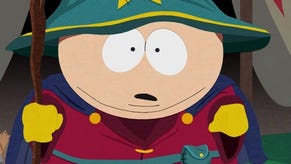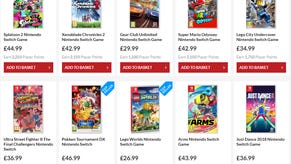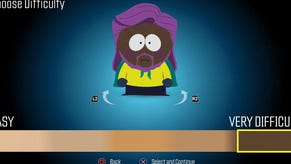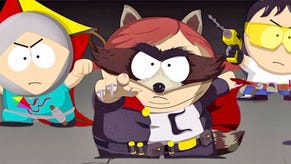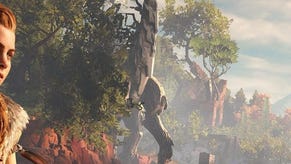South Park: The Fractured But Whole review
Are games fart?
Editor's note: Ubisoft's South Park RPG hits the Switch today, so to mark the occasion we're returning to our original review, first published in October last year.
For nearly two decades, South Park's creators have been working to a weekly production schedule. It's an inconceivable cadence that must raise stress and caffeine levels well beyond what medical professionals would endorse, but crucially it allows the show the agility to satirise events as they're happening in a way that most television can't. By contrast, South Park: The Fractured But Whole has been in development at Ubisoft San Francisco for over two years. Perhaps it's this fact, above all else, that best explains why it falls just faintly but consistently flat.
It's not simply that the game isn't topical. The well-recieved Stick of Truth spent five years in gestation, after all, and didn't feel at all lacking relevance or bite back in 2014. But The Stick of Truth had the advantage of going first. It was the vessel for every observational gag about gaming that had ever occurred to Matt Stone and Trey Parker up to that point, and on those terms it was a real pleasure. Familiar RPG design met naturally in the middle with the series' humour and made a cohesive whole. But with the jokes about gaming already made once before, and South Park's defining current affairs-based humour kept out of reach by game development's longer timespan, The Fractured But Whole can't help but miss the mark. It's a game that listlessly re-tells the same 'gaming be like' jokes as its predecessor, changing tack only to give 2015's hot button issues like gentrification a real roasting. Like the TV show did. In 2015.
What's all the more frustrating is that limp writing is the only real problem with The Fractured But Whole (other than that name, obviously). Elsewhere, Ubisoft San Francisco has done a commendable job expanding the turn-based combat system to incorporate multi-class character builds and place more emphasis on positioning party members effectively, broadly similar to Divinity: Original Sin 2's battle grids and even Disgaea's esoteric boxiness. It's a system that serves the new superhero theme well: you're once again the New Kid in town, only this time it's the town that's changed. On a whim Eric Cartman ditches the role-playing world the neighborhood kids have been playing in for his own comic franchise universe, Coon and Friends. Thus, the town of South Park changes from a nine-year-old's vision of Middle-Earth to a nine-year-old's vision of a crime-ridden metropolis, and the Archmage's Wands and Axes of Stopping are replaced by endearingly rubbish superhero abilities from the likes of Toolshed, Mosquito, Captain Diabetes, and The Amazing Butthole.
Superheroes having abilities innate to their beings and all that, equipment upgrades now take a backseat. Outfit customisation is a purely aesthetic endeavour - and before you ask: no, they're not unlocked via loot boxes. Outfit items, along with the obligatory collectible detritus, are scattered throughout the world map, often dangled tantalisingly at the end of a navigational puzzle that might require farting yourself back through time to navigate a hazard, or combining that same flatulence with The Human Kite's airborne prowess to reach the town's rooftops. The human body's tendency to produce methane during the process of digestion has seldom escaped South Park's attention, and in this case it's your essential power; a means of time manipulation, navigation, and inflicting a grossed out status effect on enemies.
It's not entirely without upgrade trees, however. In the place of traditional RPG gear slots or skill points are DNA strands and Artifacts which modify your character's stats and offer bonuses to things like critical hit chances and health recovery. New slots for these are unlocked every time you level up, and new artifacts can be crafted, bought, or found, lending a pleasing and uncomplicated sense of progression to your character. Things get fiddlier when periodically selecting a new class to add to any existing ones. Basically it's a chance to swap old abilities out for new ones, although since you're forced to select your new class without having examined the abilities it offers, you're essentially stabbing in the dark. I suspect there are much more effective builds than the Cyborg Speedster Gadgeteer Thingamy I've created, but it's an enjoyable hybrid all the same. It's still an RPG, then, under all the masks and capes, but a less conventional one than Obsidian crafted in 2014.
In that sense, at least. Because for all the hoods and staffs in The Stick of Truth, it had plenty to counterbalance that trad stuff with in its many excitable left-turns, both narrative and in its design. Moments like the journey through Canada, which was not only one of the game's best jokes but a welcome bundle of fresh gameplay opportunities you didn't see coming. There are leftfield game-changing moments here too, but they're kept exclusively in the back third behind 15 or so hours of routine superhero-ing. Wake up, pop over to Cartman's, run an errand for him, then go to your parents' house and pretend to sleep before sneaking out for the night's big boss fight. This isn't in itself a bad thing: the Persona series thrives on a strict daily routine structure and The Fractured But Whole has some of that same perverse thrill of mixing the mundane and the extraordinary. The problem, as you'll remember, is that the writing isn't very good. If it were, the pacing would feel just right because you'd be flung from one memorable caper to the next, with just enough time to appreciate a passing item description joke. But it isn't, so instead you have the feeling of trotting between greatly enjoyable battles interspersed by toothless sketches.
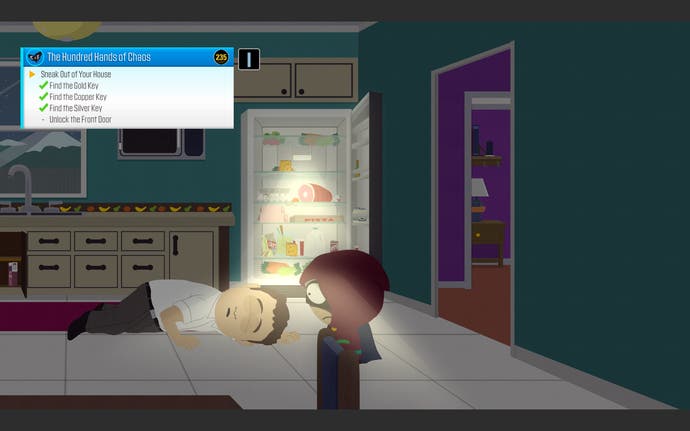
It has its moments, though. At its best, The Fractured But Whole wields familiar game design elements as a tool for satire, and that satire's at its sharpest when presenting to you a skin colour-based difficulty slider, and consequently giving less money to black player characters and altering attitudes from certain characters towards you. But at its lowest points, you're listening to kids tell you "Well, nothing left to do but go home and play Star Trek: Bridge Crew" without a shred of irony. Oh, and here's another kid five minutes later, telling you: "When I go home, I'm gonna play Star Trek VR, and it's gonna be awesome." It's a bit like watching someone give an insightful TED talk, and then having them come up to you and try to flog you a fidget spinner.
Most of the time the humour falls somewhere in the middle, neither inspired nor completely inane. Coonstagram, the social media network by which South Park's youth define their standing and trade that standing like currency, is a riff on The Stick of Truth's quasi-Facebook network. Your repeated talks with school counsellor Mr Mackey on gender and sexuality feel as though they're heading towards a payoff but never do, resulting in little more than some later confusion as to which bathroom to meet in and a possible fight with some rednecks who don't take kindly to cisgender folks. Cartman's business-minded franchise building offers some of the most consistent laughs, but the shtick doesn't have the same glee to it that the previous fantasy setting offered. There are only so many times you can sit around and discuss who's getting their own Netflix series, after all.
South Park: The Fractured But Whole is an RPG with tangible qualities and enjoyable passages, but without the bite or imagination you'd expect of the name. For anyone who grew up with the TV show, there's still some thrill to be had in simply walking around that familiar town, rubbing shoulders with its famous denizens and savouring the feeling of having an episode play out around you. But these were qualities of the last game too, and they have that bit less impact the second time around. Ubisoft San Francisco's rebuilt combat system goes some way to push back the sense of deja vu, but it entirely can't shake off the suspicion that this is a sequel which exists because its predecessor was so popular, not because its creators were brimming with more ideas.



